Low cost Al, Zn, Mg alloy,etc Sand Casting investment Casting Die Casting
The die casting process consists of injecting molten metals with low melting points (such as zinc and aluminum) into a die casting mold and allowing them to cool. Depending on the melting point, this occurs in two different mechanisms (hot chamber casting and cold chamber casting), suitable for the manufacture of simple and complex sheet metal parts.
This process is unique in its approach and is responsible for the manufacture of many metal parts used in the manufacture of consumer and industrial products. Before using the process or outsourcing to a company that offers this service, one needs to know about it. This article will describe the history of die casting, its mechanisms, and the advantages and disadvantages of the die casting process.
Die casting is a process that melts a low melting point metal and injects it into a mold that has been made (called a die casting mold). The mold or tool is manufactured by a manufacturing process such as CNC machining to create individual items of steel. Die casting produces sheet metal parts with a high degree of accuracy, precision and repeatability.
![1675150497355841.png `HZF7NV(M_J6}H(_M~H)W]H.png](/Uploads/image/20230131/1675150497355841.png)
Die casting dates back as far as 1800 and was an important technology in the printing industry. in 1849, Sturges built manual die casting machines for printing, making it more precise, creative and durable in making different complex shapes. Later, in 1855, Otto Mergenthaler built the more efficient oil press, which was an important part of the publishing industry.
Due to its advantages, the demand for die casting machines grew in the 19th century and they were used in many industries. Technology advanced during this period. For example, aluminum replaced tin and lead because of its higher quality. In addition, the original low pressure injection die casting process was changed to high pressure casting.
The industrial die casting processes are hot chamber die casting and cold chamber die casting. Each has its own characteristics and is suitable for different situations. The following are the entail involved in these two processes:
Hot Chamber Die Casting
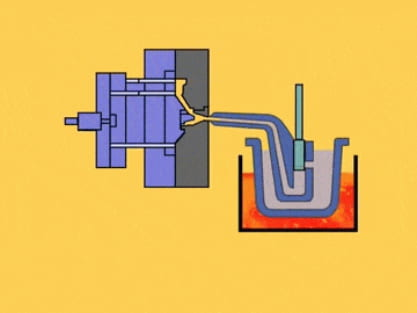
The hot chamber die casting process is perfect for handling low melting point materials such as zinc, tin, lead and magnesium alloys. It is not suitable for alloys with higher melting points because the pump will be damaged by direct contact with the metal. It involves melting the metal and injecting it into the mold with the pressure of the hydraulic system.
Cold Chamber Die Casting
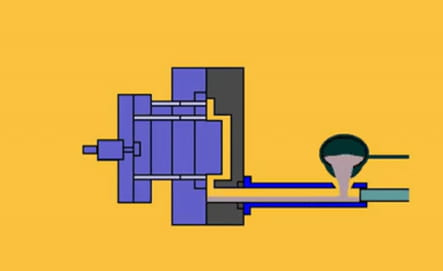
Cold chamber die casting is the perfect method for handling high melting point materials such as aluminum. This process is suitable for handling such metals and prevents the high temperatures required to melt the material from damaging the pump system.
The process involves ladling the molten material into a cold chamber prior to injection into the mold. The hydraulic system used in the cold chamber process is similar to that of the hot chamber process, but requires higher pressures ranging from 2000 to 20,000 psi.
The standard process for both hot chamber die casting and cold chamber die casting is to inject the molten metal into the mold under high pressure. The following are the steps of the die casting process:
Painting
The first step in die casting is to lock the mold. Prior to this, the mold should be cleaned to remove impurities and lubricated for better injection and removal of the solidified product. After cleaning and lubricating, the mold is clamped with high pressure.
Injections
Melt the metal and pour it into the injection chamber. This process depends on the process used. For example, in cold chamber die casting, the injection chamber is cold and in hot chamber die casting, it is hot. Afterwards, the metal is injected into the mold under the high pressure generated by the hydraulic system.
Cooling
While clamping, the metal is allowed to cool and solidify. The solidified material will have a shape similar to the mold design.
Demolding
After releasing the mold, the ejector mechanism pushes the solid casting out of the mold. Proper solidification is ensured before stripping the final product.
Trimming
This is the final step to remove excess metal from the gates and runners found on the finished product. Trimming can be done using trimming mold, saws, etc. The portion of metal is recyclable.
Most of the alloys used in die casting are non-ferrous metals with strong mechanical properties. Non-ferrous metals have low melting points and strong mechanical properties. The desired properties depend on the material being processed and there are no restrictions on the choice of material. Below are a few popular alloys.
Aluminum alloy has unique properties and can manufacture various products. On the one hand, aluminum alloy 380.0 is the most common material used in die casting due to its unique properties. Other alloys include aluminum alloys 360, 390 and 413. the following are the characteristics of aluminum alloys:
High working temperature
Excellent corrosion resistance
Light weight
High strength and hardness
Good stiffness and strength-to-weight ratio
Excellent EMI and RFI shielding performance
Excellent thermal conductivity
High conductivity
Good finishing characteristics
Fully recyclable
Withstands the highest operating temperatures of any die casting alloy
Corrosion resistant
It maintains high dimensional stability in thin-walled cases
Zinc alloy
With its high strength, toughness, strength, performance and cost-effectiveness, zinc alloy is an important part of the die casting process, with properties that rival or exceed those of other alloys such as aluminum, magnesium and bronze.
There are many zinc alloys available. Common die cast zinc materials are Zamak #2, #3, #5, #7, ZA8, and ZA27, with the following characteristics:
Improved castability
Reduced cycle time
Extend mold life
Perfect mechanical quality
Magnesium alloy
Magnesium is another material used in die casting. It is available in many alloys, the most common being AZ91D, which is known for its toughness, durability, light mass and good castability. It is 75 percent lighter than steel and 33 percent lighter than aluminum with no loss of strength. It is suitable for complex casting with tight tolerances and also has better corrosion resistance.
Other alloys
Other alloys suitable for making die cast parts include bronze, brass, lead and tin.
Due to its high fluidity, tin is the first material used in die casting. The melting point is very low and it leaves almost no wear on the mold.
Bronze (white copper) is a die casting material used in the jewelry industry. It is similar in color to white gold and stainless steel alloys and has a low melting point, making it suitable for use in die casting.
Die castings must have a surface finish to improve durability, protection or aesthetics. Die castings are available with different finishing options depending on the size of the cast part and the alloy used.
Paint spraying
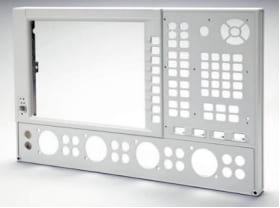
Spray painting is the most common surface treatment technique and is applied to many materials. It can provide further surface protection and aesthetics. This process includes painting, lacquering, or enameling. Before adding, the metal surface is cleaned to remove impurities such as oil (which also helps with adhesion), a primer (base coat) is added, and the main paint is applied.
Powder Coating
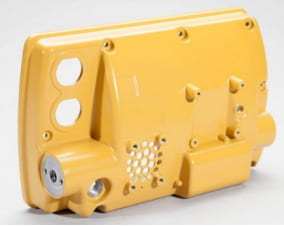
Powder coating is another common decorative surface treatment. Applying charged particles to the surface of the die casting can mask small defects on the die casting surface with better thickness control and uniformity, making the product durable, hard, highly resistant to corrosion and scratching. Powder coatings are environmentally friendly materials and do not produce harmful toxic substances.
Antiquing
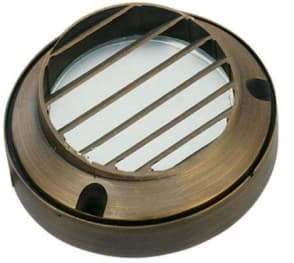
This surface treatment technique gives castings an antique appearance and is primarily applied to zinc castings. The castings are plated with copper or other alloys and then covered with a colored component, such as copper sulfide. The casting is then treated (i.e., some of the colored layer is removed to obtain a copper undercoat) to prevent discoloration.
Ceramic Coating
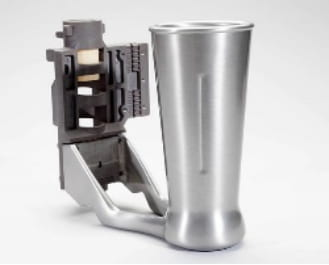
Ceramic coating is a decorative process in which ceramic is added to the exterior of a part in the form of a solution. A thin layer similar to anodizing is produced. The surface treatment preparation process is very important before its application.
Electroplating
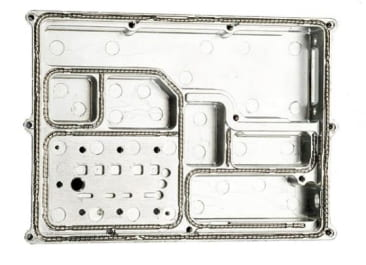
Electroplating can be a chemical or electroplating process and is an inexpensive method for die casting finishing. As an alternative to ceramic coating, the finish layer is very thin. Surface treatment is required prior to use.
Electroplating uses chemicals rather than electricity to plate die cast parts. The die cast part is placed in a chemical that is reducing in nature. When catalyzed by other minerals, the chemicals are deposited on the die cast part. Electroplating is similar, but instead of being catalyzed by minerals, catalysis occurs by passing an electric current through the electrolyte.
Both of these methods are suitable for aesthetic purposes. They can also be used to improve the electrical conductivity of certain parts.
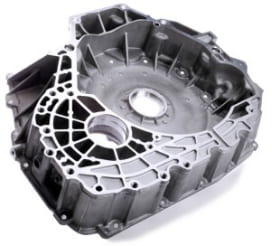
The die casting process is suitable for manufacturing unique and powerfully different parts and assemblies. The following are some of the applications of this process:
Manufacture of consumer and industrial products
This process is suitable for manufacturing consumer products such as sink faucets, compressor pistons, connecting rods, radiators, etc.
Manufacture of automotive products
The process is used to manufacture gears, cylinders, small engines, transmissions and many more specific parts suitable for the automotive industry.
Manufacture of aerospace parts
Die casting is a cost-effective solution for producing lightweight and high performance metal parts that meet the high quality standards of the aerospace industry.
Die casting is an important method of metal fabrication because of its low production costs and ease of operation. And there are other benefits to using the process. The following are the advantages of the die casting process:
Complex parts can be created
Multiple parts can be manufactured without assembly
Labor cost saving
Wall thickness can be changed
Tighter tolerances
Fast production cycle
Recyclable Materials
Not suitable for metals with high melting points
Not suitable for large sheet metal parts
High mold cost
Long delivery time
The cost of die casting is generally very low and the following are a few factors to consider when customizing costs for a die casting project:
Material Selection
The choice of materials has a large impact on the cost of die casting, and some materials are very expensive. The price of die casting materials is unstable and generally rising.
Production costs
The production cost depends on the tooling cost and the die casting cost. Die costs can be high for different production processes, technical methods, mold manufacturing and maintenance.
Tooling Cost
The cost of the tooling depends on the manufacturing process used. For example, when using CNC machining, the capabilities and advantages of the process will result in high tooling costs.
Subsequent processing costs
Subsequent processing such as trimming will also play a role in the cost of die casting. The extent, efficiency and effectiveness of subsequent processing costs will also have a significant
impact on costs.
Finishing costs
The cost of finishing depends on the finishing method used. For example, a finishing process such as plating can be more expensive compared to painting.
Die casting is an important sheet metal manufacturing process that is low cost and highly efficient. It is simple to operate and requires less just and experience.
At BRM we are able to offer a team with extensive experience in die casting services. Our team is capable of providing the right process advice for your die casting project.
Why is it called die casting?
This process is called die casting because of the use of molds. The mold is a steel mold made mainly by CNC machine tooling that injects the metal liquid into the mold. It has two parts:
the fixed part is fixed to the casting machine, while the ejector part is movable.
What is the difference between sand casting and die casting?
Sand casting and die casting are both important metal manufacturing processes. The difference between these two processes is the material used in forming the mold. The die casting process requires a metal mold, while sand casting uses a mold made of sand. Die casting is only suitable for low melting point metals of non-ferrous origin, while sand casting has a much wider range of support.
What is the difference between injection molding and casting?
Die casting, and injection molding have the same mechanism of injecting molten material into a mold and allowing it to cool. Injection molding uses materials such as ABS, polypropylene, TPU and polyethylene, while die casting uses low melting point metals.
Contact: Alexander Sun
Phone: +86 19916725893
Tel: 0512-55128901
Email: [email protected]
Add: No.6 Huxiang Road, Kunshan development Zone, JiangsuShanghai Branch: No. 398 Guiyang Rd, Yangpu District, Shanghai, China